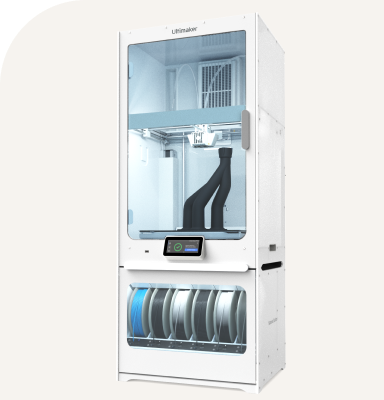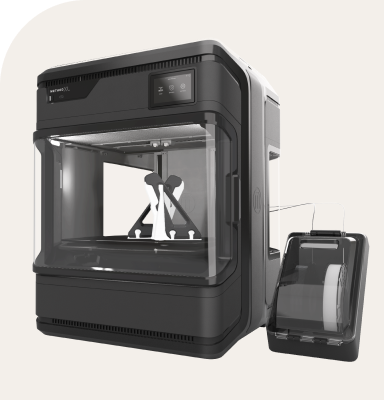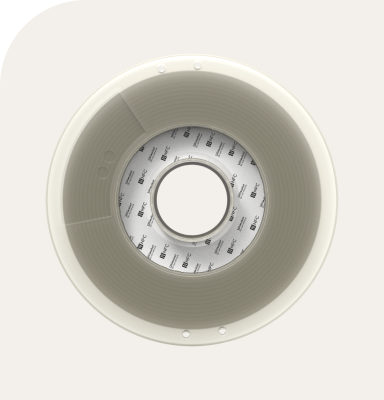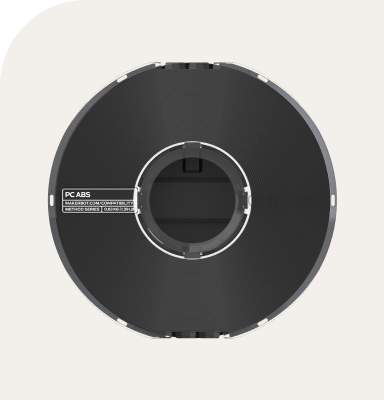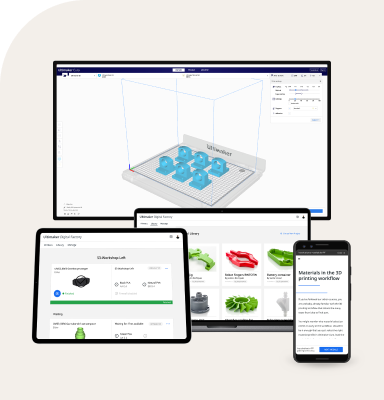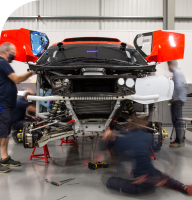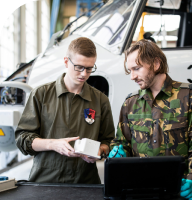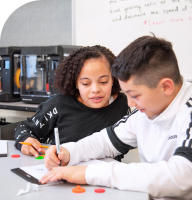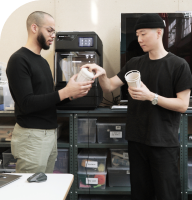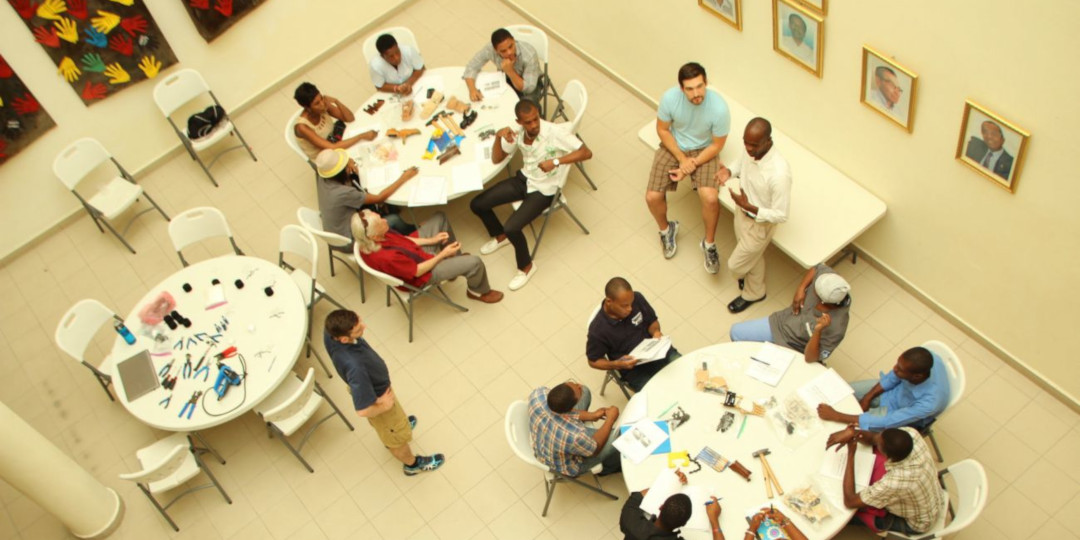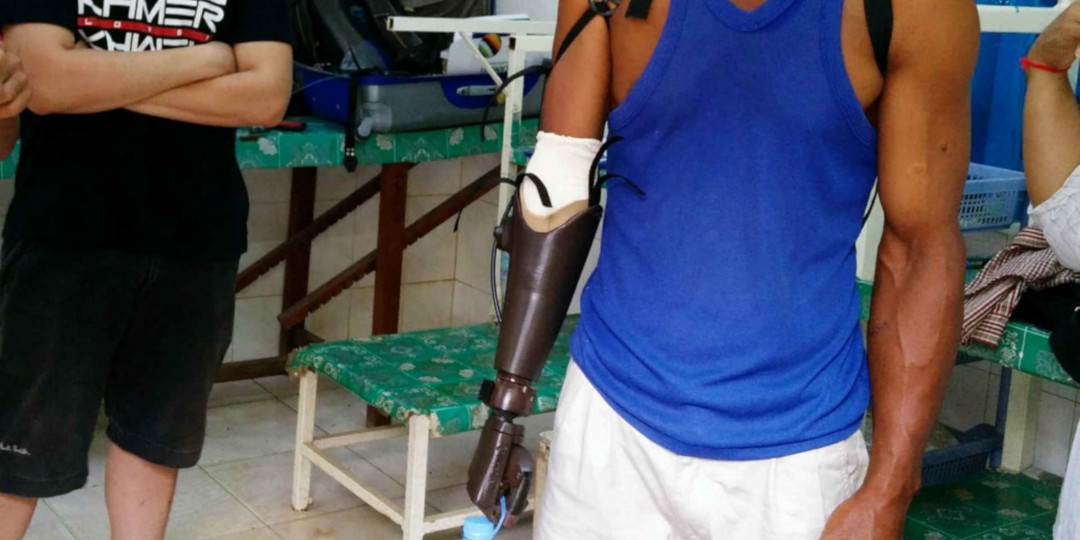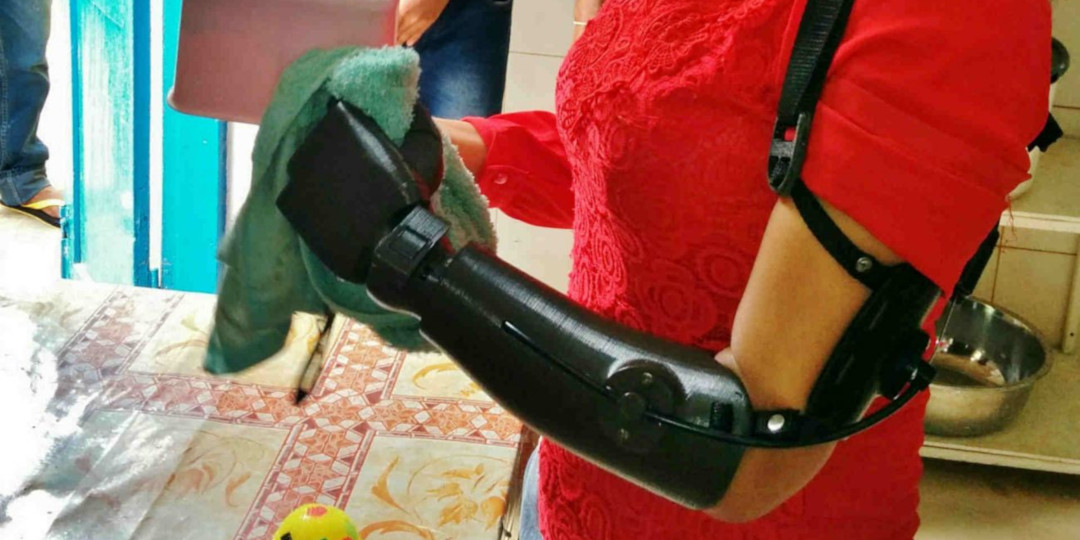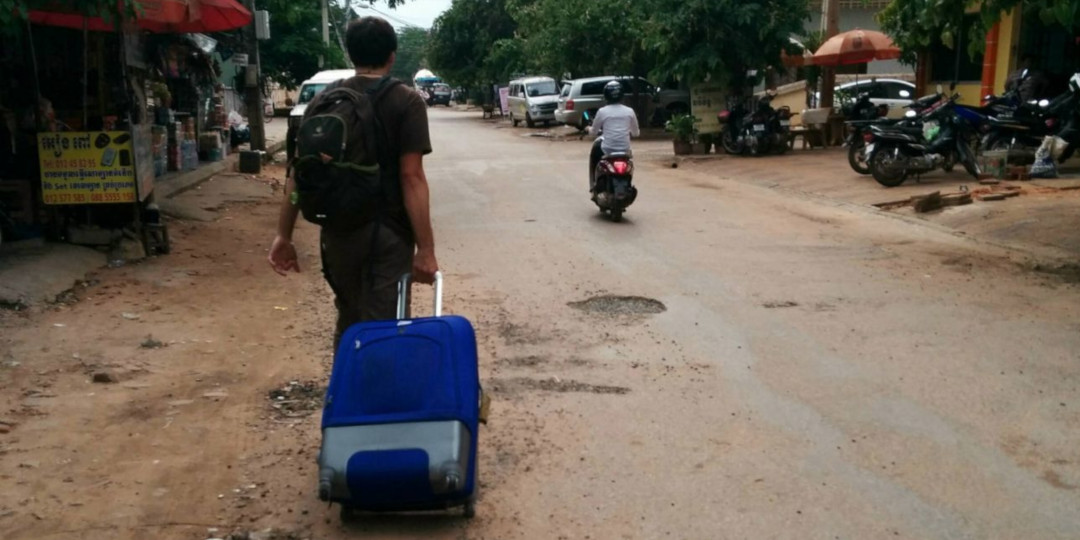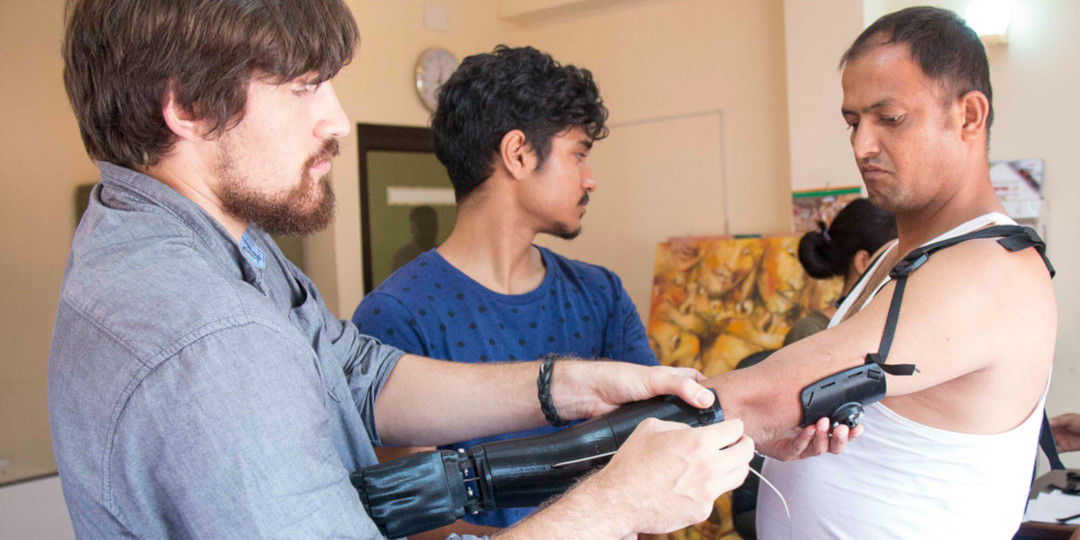3D printing offers limitless new possibilities, no matter what part of the world it is introduced in. The Victoria Hand Project creates customized prosthetic hands for amputees in third world countries – using Ultimaker 3D printers to make the process more efficient and cost-effective. Here’s some further details about the benefits of using 3D printing, and the unique challenges that the Victoria Hand Project faces.
Prosthetic creation - before 3D printing
Before 3D printing, creating prosthetics for people in developing countries was incredibly challenging. The remote location of communities meant that exporting materials was expensive. In addition, lack of resources and poor working conditions also made it difficult to create suitable prostheses.
Nepal is just one example. Before the Victoria Hand Project got established there, 72.5% of Nepalese amputees had no access to prosthetics.
People with disabilities have high expectations of the prosthetist and the prosthesis itself, as they’ve seen it online and they expect the same in their country. However, accessibility is low, and hi-tech prosthetics are not affordable for the people. 80% of the disabled population lives in poverty, and the healthcare professionals are limited in rehabilitation management.
Likewise, in Cambodia, it’s easy to obtain a prosthetic hand if required, but they’re generally only for cosmetic use – and cannot be used to perform practical tasks. Many farmers, for example, have lost limbs due to landmines or other ordnances, and choose not to get a replacement limb, due to its lack of functionality.
The Victoria Hand Project
After receiving a grant from Grand Challenges Canada, the Victoria Hand Project team was finally able to start offering 3D printed prostheses to people in developing countries. They are now working in several locations, creating customized prosthetics for amputees using 3D printing technology. Ultimaker donated four Ultimaker 2+ 3D printers to help them achieve their goals.
Here’s just a few details about the work they’re doing.
Cambodia. One of Victoria Hand’s newest partners is Arc Hub PNH in Phnom Penh, Cambodia. Angie MacDonald and Josh Coutts work on the campus of the Royal University of Fine Arts, and collaborate with Arc Hub PNH to offer not only prosthetics to local people, but also design and fabrication services across the capital.
Nepal. In Kathmandu, Nepal, Michael Peirone trains clinicians and engineering students at Nepal Orthopedic Hospital. Their partner, Limb Care Nepal, hosted a number of user trials, which assisted greatly with prosthetic design improvements.
The benefits of 3D printing
The Victoria Hand Project found that 3D printing provided the ideal solution for amputees in developing countries. The technology offers a number of advantages:
‘In-country’ creation. Rather than manufacturing abroad and mailing to a developing country at considerable cost, the prosthesis can be printed in the same country. This means it can be delivered more quickly, and at a greatly reduced cost.
Cost-effective. 3D printing reduces the need for expensive manufacturing equipment, such as injection molding machines, mills and lathes.
Replacement parts. Replacement parts, tools and medical equipment can be created using the 3D printer and plastic filament, rather than importing at considerable expense.
Custom-designed. All prosthetics can be customized to suit the user. This includes aesthetic factors such as skin tone.
Verification of designs. 3D printing is far cheaper, which makes it possible to verify conceptual designs.
Mobility. 3D printers can be easily relocated, which means more amputees can have access to the technology.
Functionality. 3D printed limb designs can be easily modified and enhanced to offer better range of movement for amputees.
The team also highlights several other benefits to having access to 3D printing technology. For example, the group working in Cambodia uses their 3D printer to build large-scale models of unexploded ordnances, which can be used to demonstrate how to deactivate them safely.
The ability to create a design anywhere in the world, send it to those who need it, then print it instantly, opens a world of possibilities. It also connects the global community in new, exciting ways, encouraging greater collaboration.
Challenges
Throughout their development, the Victoria Hand Project faced many challenges, both in training local clinicians and starting 3D printing production.
One of the most significant obstacles is lack of familiarity. Often, people in developing countries are less familiar with 3D printers and don’t have much access to computers. The Victoria Hand's team addressed this by ensuring that they targeted the right people to train. For example, in Nepal, they’re training engineering students, as they already have considerable experience working with engineering tools and computer programs.
Some of the issues are more location-specific. In Kathmandu, power cuts were a regular occurrence and happened at least once a day. To ensure uninterrupted power supply for the 3D printers, a new source of power needed to be established. This was eventually achieved, but presented another obstacle for the team to overcome.
Occasionally, local attitudes to prosthetics could also be problematic. In Nepal, for example, some believe that disability is a punishment from God, due to a sin committed in a previous life. As a result, these individuals are reluctant to have a visible prosthesis. Additionally, some people would rather have a visually appealing prosthesis than one that offers good functionality. The government in Nepal are working with the Victoria Hand Project to find clients for the project, and help change attitudes in the wider community.
Local support
According to the team, both governments and local people have been very supportive of the initiative, and excited about the potential it offers their community and the country as a whole.
Initially, there wasn’t much awareness – but the media are now covering 3D printing technology, which spreads the word effectively. The Victoria Hand Project also works with the government, who helps them find suitable clients from their database.
The Victoria Hand Project team continues to do remarkable work around the world, but needs support to achieve their goals. If you’d like to find out more about the project or want to donate, click here. And don't hesitate to spread the word!


